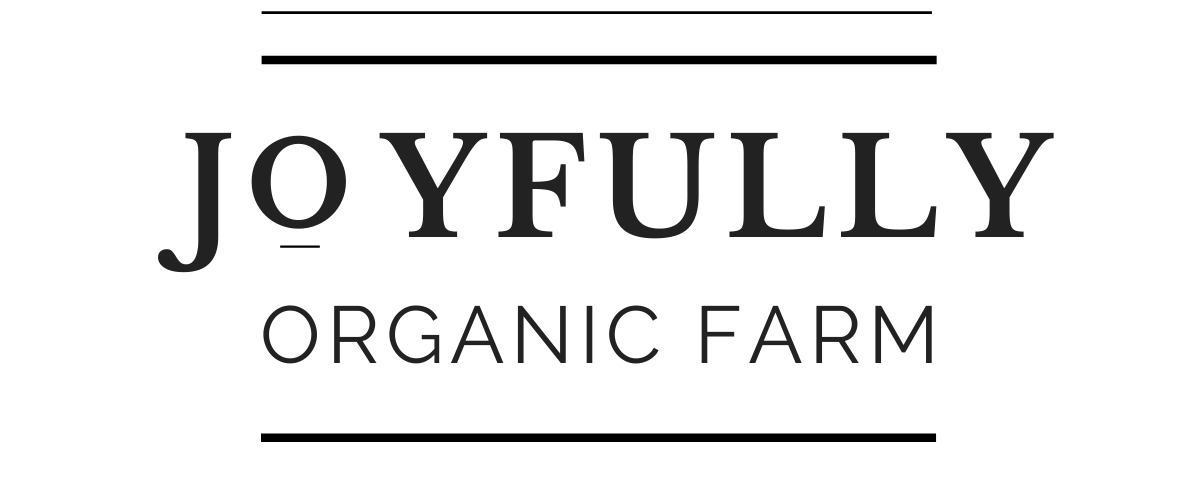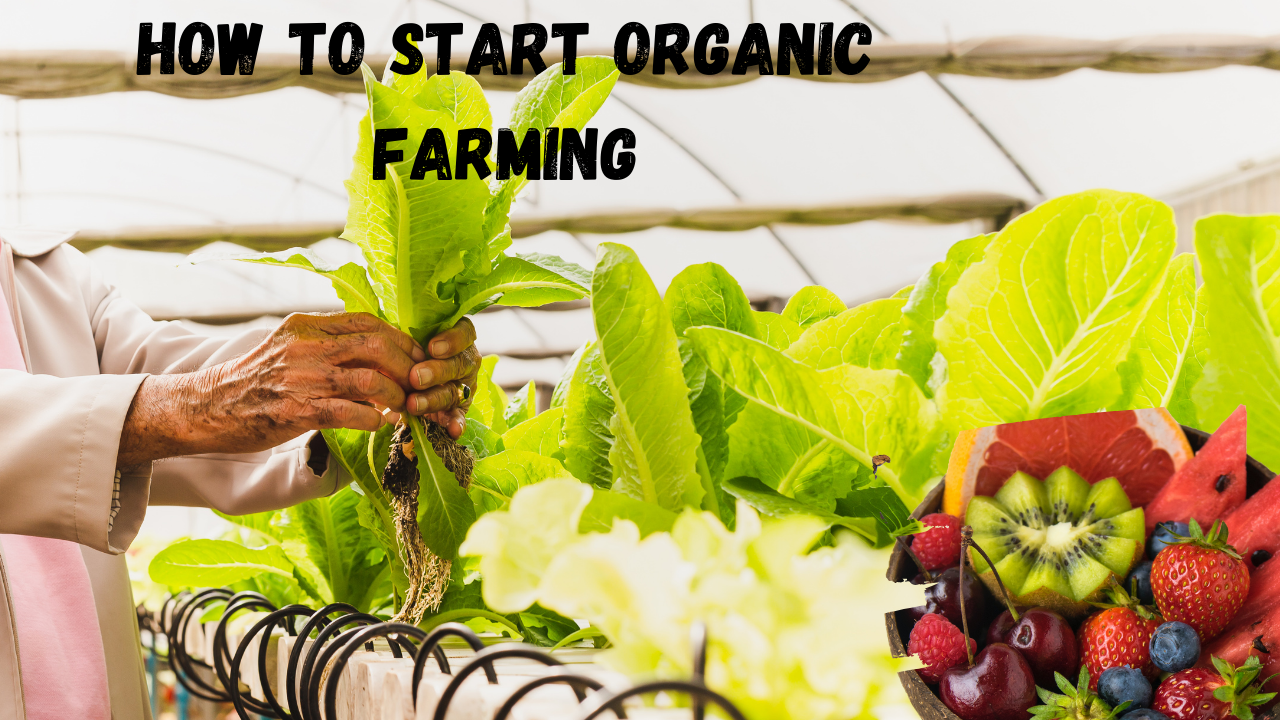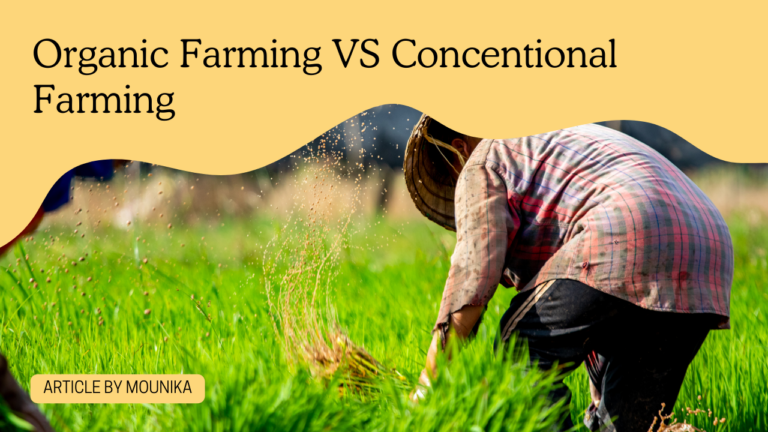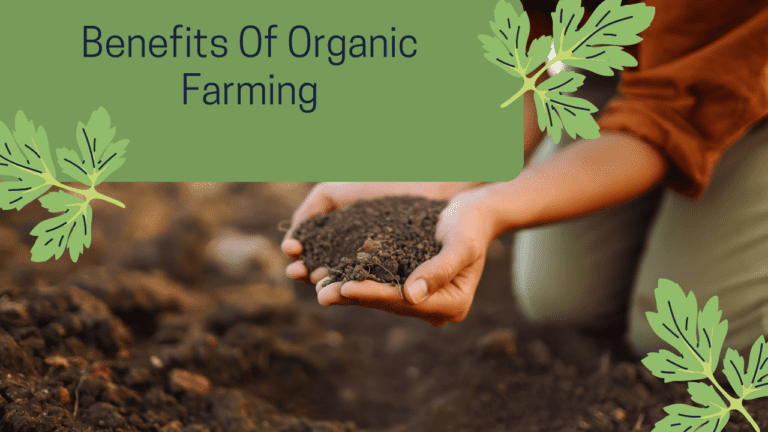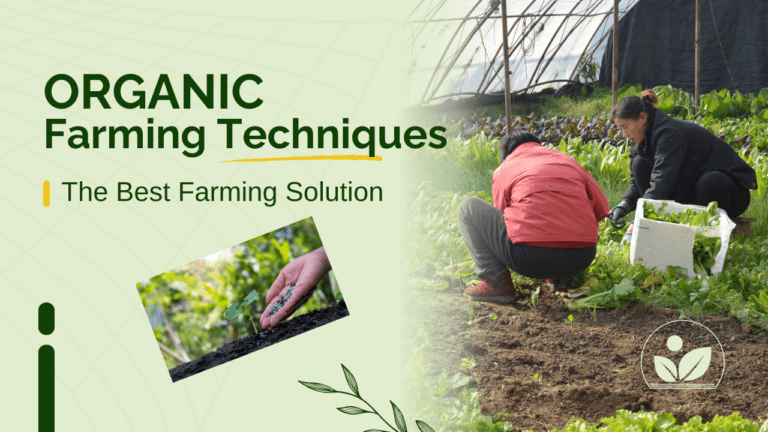5 Proven Strategies of how to start Organic Farming Success Today
How to start Organic Farming
Starting an organic farm can be a rewarding and sustainable way to contribute to the environment and produce healthy food.
This guide will provide a comprehensive overview of how to start organic farming, covering everything from initial planning to certification and marketing.
Let us Know How to start Organic Farming in a better way to make people easy and understandable.
Table of Contents
- Introduction to Organic Farming
- Planning Your Organic Farm
- Choosing the Right Location
- Soil Testing and Preparation
- Selecting Crops and Livestock
- Setting Up the Farm
- Building Infrastructure
- Installing Irrigation Systems
- Acquiring Tools and Equipment
- Organic Farming Techniques
- Crop Rotation
- Composting
- Biological Pest Control
- Free-Range Grazing
- Certification and Regulations
- Understanding Organic Standards
- Certification Process
- Maintaining Compliance
- Marketing Your Organic Products
- Identifying Your Target Market
- Branding and Packaging
- Online and Offline Sales Channels
- FAQs
- Summary
- References
Introduction to Organic Farming
Organic farming is a method of agriculture that relies on natural processes and inputs to grow crops and raise livestock.
It emphasizes sustainability, biodiversity, and soil health, avoiding synthetic chemicals and GMOs. Starting an organic farm requires careful planning, dedication, and a commitment to organic principles.
Planning Your Organic Farm that how to start Organic Farming
Choosing the Right Location
- Climate and Weather: Select a location with a suitable environment for the crops and livestock you plan to raise.
- Soil Quality: Ensure the soil is fertile and well-drained.
- Water Availability: Access to a reliable water source is crucial for irrigation and livestock.
Soil Testing and Preparation
- Soil Testing: Conduct soil tests to determine nutrient levels, pH, and organic matter content.
- Soil Amendments: Add organic matter such as compost or manure to improve soil fertility and structure.
- Cover Cropping: Plant cover crops to protect and enrich the soil before starting your main crops.
Selecting Crops and Livestock
- Crops: Choose crops that are well-suited to your climate and soil conditions. Consider market demand and crop rotation needs.
- Livestock: Select breeds adapted to your environment and can be raised organically. Focus on animals that provide multiple benefits, such as chickens for eggs and pest control.
Setting Up the Farm
Building Infrastructure is a base for how to start Organic Farming
- Fencing: Install durable fencing to protect crops and livestock from predators and pests.
- Shelters: Build appropriate shelters for livestock to protect them from the elements.
- Storage: Set up storage facilities for tools, equipment, and harvested produce.
Installing Irrigation Systems
- Drip Irrigation: Use drip irrigation to conserve water and provide consistent moisture to crops.
- Rainwater Harvesting: Implement rainwater harvesting systems to supplement your water supply. Setting up the farm make sense that how to start organic farming.
Acquiring Tools and Equipment
- Hand Tools: Invest in quality hand tools such as hoes, rakes, and shovels.
- Machinery: Consider machinery like tractors and tillers for more extensive operations.
- Organic Inputs: Source organic seeds, fertilizers, and pest control products.

Organic Farming Techniques
Crop Rotation
Crop rotation is planting several crops in the same spot throughout successive growing seasons. Benefits include:
- Soil Fertility: Different crops utilize and replenish different nutrients.
- Pest Control: Rotating crops breaks pest and disease cycles.
- Improved Yields: Helps maintain soil health and productivity.
Composting
Composting turns organic waste into valuable soil amendments. Steps include:
- Collect Organic Waste: Gather kitchen scraps, yard waste, and manure.
- Build Compost Pile: Layer green and brown materials.
- Preserve Moisture: Make sure the pile is damp but not soggy.
- Turn Regularly: Aerate the pile to speed up decomposition.
Biological Pest Control
Using natural predators to control pests reduces the need for chemical pesticides. Examples include:
- Ladybugs: Eat aphids and other small insects.
- Parasitic Wasps: Attack and kill pest larvae.
- Nematodes: Target soil-dwelling pests.
Free-Range Grazing
Allowing livestock to graze freely promotes natural behavior and health. Benefits include:
- Healthier Animals: Access to natural forage and exercise.
- Improved Soil: Grazing animals contribute to soil fertility through manure.
Certification and Regulations
Understanding Organic Standards
- National Standards: Familiarize yourself with the organic standards set by your country’s regulatory body (e.g., USDA Organic in the USA).
- Prohibited Substances: Avoid synthetic chemicals, GMOs, and specific additives.
- Record Keeping: Maintain detailed records of farming practices, inputs, and outputs.
Certification Process
- Choose a Certifying Agency: Select an accredited organic certifier.
- Submit an Application: Provide details about your farm and practices.
- Inspection: An inspector will visit your farm to verify compliance.
- Certification: If approved, you will receive organic certification.
Maintaining Compliance
- Annual Inspections: Undergo yearly inspections to ensure ongoing compliance.
- Record Maintenance: Keep updated records of all farming activities.
- Continued Education: Stay informed about changes in organic standards and practices.
Marketing Your Organic Products
Identifying Your Target Market
- Local Markets: Farmers markets, CSA (Community Supported Agriculture) programs, and local grocery stores.
- Online Sales: Utilize e-commerce platforms and social media to reach a broader audience.
Branding and Packaging
- Brand Identity: Develop a strong brand identity that reflects your farm’s values and products.
- Eco-Friendly Packaging: Use sustainable packaging materials that appeal to environmentally conscious consumers.
Online and Offline Sales Channels
- Farmers Markets: Directly connect with customers and receive immediate feedback.
- E-Commerce Platforms: Set up an online store to sell products beyond your local area.
- Subscription Services: Offer CSA memberships where customers receive regular deliveries of fresh produce.
FAQs
Q1: What are the basic requirements for starting an organic farm?
A: Basic requirements include suitable land, knowledge of organic practices, and compliance with organic certification standards.
Q2: What is the duration required to obtain organic certification?
A: The certification process typically takes several months, including the time for application, inspection, and approval.
Q3: Is organic farming profitable?
A: Organic farming can be profitable due to premium prices for organic products and lower input costs over time.
Q4: What are the common challenges in organic farming?
A: Common challenges include pest and disease management, soil fertility maintenance, and higher labor requirements.
Summary
Starting an organic farm involves:
- Careful planning.
- Setting up the necessary infrastructure.
- Adopting sustainable farming techniques.
- Obtaining organic certification.
You can create a successful and sustainable organic farming business by focusing on these critical areas. With increasing consumer demand for organic products, a significant opportunity exists to build a profitable and environmentally friendly enterprise.
References
- International Federation of Organic Agriculture Movements (IFOAM)
- Food and Agriculture Organization (FAO) on Organic Agriculture
- US Department of Agriculture (USDA) Organic Program
Table: Comparison of Organic and Conventional Farming Practices
| Aspect | Organic farming | Conventional farming |
| Fertilizers | Organic fertilizers (compost, manure) | Synthetic fertilizers |
| Pest Control | Biological pest control, natural predators | Chemical pesticides |
| Soil Management | Enhancing soil fertility with organic matter | Minimal focus on soil health, reliance on chemicals |
4o
